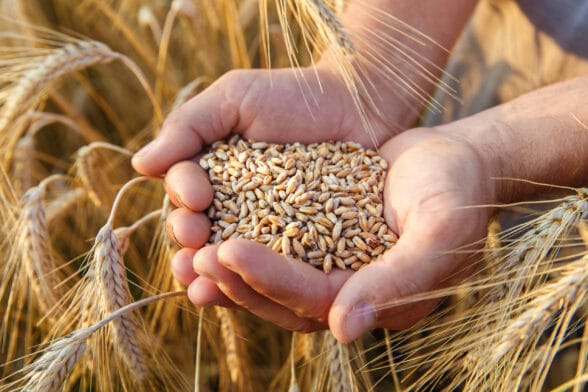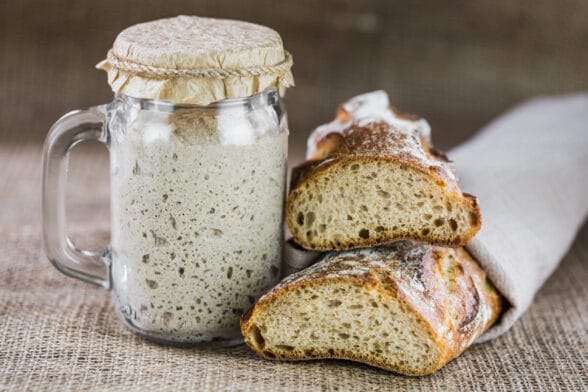 Hi Everyone,
Hi Everyone,
NOTES:
* I have a document entitled “An Approach to Longer-Term Food Storage” prepared by the College of Life Sciences at BYU. The breakdown they give for grains provides about 2000-2400 calories and protein for one adult for one year. They break down all the “grains” category like this: Wheat 24 #10 cans or about 132 pounds; rice 12 #10 cans or about 65 pounds; oats 12 #10 cans or about 29 pounds; pasta 6 #10 cans or about 21 pounds.
* Still fighting the battle of the earwigs. I bought some Sluggo Plus which is supposed to help control earwigs. Today, in my garden, I found one earwig sitting on a bean leaf, and one burying itself in the dirt in a lettuce container. Almost all the lettuce in that container is dead, having been eaten from above and below by those pesky vermin!!! I DID find one already dead, so I’m not giving up on the Sluggo Plus just yet.
* School is almost over. Check out https://www.justserve.org/ Find a service project your kids can work on during the summer that will benefit your community no matter where you live. If you KNOW of a project, just submit it to the website and get some help.
* I’ve talked several times about taking pictures of your whole house and storing them on a stick. I found this comparison today of several different brands of “photo sticks” and thought I’d share. Protect Your Photos!
LONG TERM FOCUS: Wheat

Be brave and branch out to new grains
From the book, Food Storage Powerhouse, by Claudia Orgill, we learn that there are three types of grains.
- Cereal grains. These grains are considered a grass. The fruit of these grasses consists of the endosperm, germ, and bran. They are considered staple foods because of their consumption and daily basic needs. Examples: barley, oats, rice, rye, wheat, millet, and a few others
- Pseudo-Cereal Grains These are closely related to cereal grains but are not. Examples: amaranth, buckwheat, chia, quinoa, etc.
- Legumes. These are mainly grown for livestock forage and silage in Western countries. In eastern countries, they act as staple foods. Examples: alfalfa, clover, peas, beans, lentils, soybeans, peanuts, etc.
As with all foods, a variety of grains will supply a variety of nutrients.
I’m the first to admit I could use more variety in my diet. I blame it all on my husband who shuns new foods. LOL
I do like barley and quinoa, although I don’t cook it often. REMEMBER – ONLY STORE WHAT YOU WILL EAT!!!. But, if you like it, store some, THEN figure out how to cook it.
SHORT TERM FOCUS: Yeast
So, you CAN store yeast. Freezing is best. But it will not last forever. Most expiration dates will give you about a year if you keep the yeast in the refrigerator. In the freezer, you can probably get 2 years. You can test your yeast like this:
Follow these steps to test if your room temperature yeast is fresh:
- Dissolve 1 teaspoon of granulated sugar in 1/2 cup warm (110°-115°F) tap water inside of a one cup or larger measuring cup.
NOTE: It is best to use a thermometer, but if you don’t have one make sure the tap water is warm, not hot, when touched. Water that is hotter than 120°F will kill the yeast and cooler water will not be able to activate the yeast. - Stir in a yeast packet (or 2-1/4 tsp of dry yeast) until dissolved.
- Wait – in a minute, it should become activated and after 10 minutes should rise to the 1 cup mark.
- Use your test in your recipe right away (remembering to deduct 1/2 cup liquid from your recipe) – OR, if it did not rise then your yeast has gone bad and should be thrown away. Learn more here: How Long Does Yeast Last? Shelf Life, Storage, Expiration
 I figure, in an emergency situation, at some point we’ll have to resort to natural yeast. I have a starter that I’ve kept alive for almost 3 years now. I make waffles once every 7-10 days, then replenish it. At first, I practiced making bread, trying to get a bread that was not too “sour.” When I finally had it pronounced “edible” by my other half, I stopped making it.
I figure, in an emergency situation, at some point we’ll have to resort to natural yeast. I have a starter that I’ve kept alive for almost 3 years now. I make waffles once every 7-10 days, then replenish it. At first, I practiced making bread, trying to get a bread that was not too “sour.” When I finally had it pronounced “edible” by my other half, I stopped making it.
In an emergency, you can make your own natural yeast. Cultivate Your Own Wild Yeast Starter I watched a lot of videos. Some people measure and weigh so carefully. Frankly, you don’t have to be quite so exact. It took me three weeks to get my “homemade” starter to look like the starter someone gave me. So, it’s NOT an overnight thing. Now, I keep my starter in the fridge and find it only needs feeding about once a week.
If you go to Emergency Preparedness, then scroll down, you will find a class on making and using natural yeast.
Making bread with processed yeast or natural yeast has a learning curve like anything else. Just practice. Most of the time, you will still be able to eat your mistakes. Who doesn’t love the smell of cooking bread and a warm piece with butter and jam??? If not, feed it to the birds.
One time, as a young mother, I made a huge batch of bread. I got it all kneaded and ready to rise….and then it didn’t. The yeast was dead. I started to cry. I could hardly afford to throw away all the flour and ingredients in this batch of bread. I finally called my grandma and cried out my problem to her. She said, just dissolve some new yeast, make a well in the dough, and add it in with some additional flour. It worked!!! I was so grateful to have a resource from someone who knew “the old ways”. LOL
72-HOUR KIT FOCUS: Fire Starters

This guy just used make-up circles and fried them in wax. You have to have a frying pan you are willing to throw away to do this one. But he breaks one in half and uses flint and steel and it catches the spark on the first try. Kinda cool. The Ultimate Bushcraft/Prepper Firestarter – Home-made. Cheap. 100% Waterproof and Reliable – YouTube
This guy has 10 different ideas for fire starters: cotton balls and duct tape; leftover crayons and cotton balls; sawdust, egg carton and melted wax; dryer lint, empty toilet paper rolls and candle wax; cotton and petroleum jelly; Q-tips and chapstick (this burns the whole tube of chapstick, like a candle), hand sanitizer creates a clear flame that you can’t see –this was cool; Pringles chips are flammable-who knew?; dried orange peel; leftover birthday candles 10 Fire Starter Hacks
For MY firestarters, I used an egg carton stuffed with dryer lint, then poured melted wax over it. I did NOT cut them apart until they were finished and cooled. I tried one out and it burned about 17 minutes. I LOVE them!!! You can use leftover wax bars from those wax air fresheners. OR you can use melted cheap candles, OR you can use paraffin wax found at most grocery stores near the canning supplies.
MISCELLANEOUS FOCUS: Lanterns
One year, we found a good deal on solar-powered lanterns.
Here is just one example: Maggift 34 Inch Hanging Solar Lights Dual Use Shepherd Hook Lights with 2 Shepherd Hooks Outdoor Solar Coach Lights, 2 Pack
This is more like the ones we bought: Lanterns, Camping Lantern, Solar Lantern Flashlights Charging for Phone, USB Rechargeable Led Camping Lantern, Collapsible & Portable for Emergency, Hurricanes, Power Outage, Storm (2 Pack). You can charge with the sun OR with a USB port. It will stay light for 5-6 hours.
We gave one to each of our children for Christmas. My daughter said they just left them out in the sun during the day and they lasted several hours when it got dark.
If you have a kerosene lantern or propane lantern, that’s fine, but eventually, it will run out of fuel. That’s why a solar-powered one would be a good addition. Then you can use the propane for days when the sun doesn’t shine. LOL
FOOD STORAGE RECIPES
Breakfast Quinoa
from The Prepper’s Cookbook by Tess Pennington
1 c. milk
1 c. water
1 c. quinoa
Combine in a saucepan and bring to a boil over medium heat. Reduce to low heat; cover and simmer 15 minutes or until most of the liquid has been absorbed. Turn off the heat; let stand on the burner, covered, for 5 minutes.
1/2 tsp cinnamon
1/4 tsp cumin
fresh or dehydrated fruit such as strawberries, blackberries, or apples
1/3 c. chopped toasted pecans
6 tsp honey
Stir in the cinnamon, cumin, and fruit – all are optional. Top each serving with pecans and drizzle with 1 tsp honey.
Vegetarian Chili
from The Prepper’s Cookbook by Tess Pennington
1 can black beans, rinsed and drained
1 can red kidney beans, rinsed and drained
1 can whole kernel corn drained
1 can crushed tomatoes undrained
1/4 c. dehydrated bell peppers
2 TB dried onion flakes
2 TB chili powder
1 TB garlic powder
optional: 2 c. wheat berries
hot sauce to taste
Place all ingredients except the hot sauce in a large saucepan. Bring to a boil over medium heat, then reduce the heat to low and simmer for at least 30 minutes until the flavors are well blended.
Adding the wheat berries can add carbohydrates and boost this meal’s nutritional value.
Vegetable Beef and Barley Soup
from The Prepper’s Cookbook by Tess Pennington
1 pound ground or cubed beef, 1 cup of dehydrated beef, or 12 ounces dried beef
1 can V8 juice or tomato juice (you can use 1 8-oz can tomato sauce and 1 can water)
1 can peas and carrots undrained
1 can whole kernel corn undrained
1 can green beans undrained
1 can white or red kidney beans undrained
1/2 c. uncooked pearl barley
2 bay leaves
1 TB dried minced garlic
1 TB dried onion flakes
1/2 tsp marjoram
1/2 tsp chili powder
1/2 tsp thyme
salt and pepper
If you are using dehydrated beef, rehydrate in water for 30 minutes before adding to a large pot.
Don’t forget to get 5 things this week. FIVE
Marti

